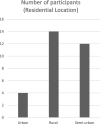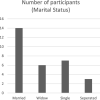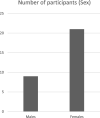Barriers and enabling structural forces affecting access to antiretroviral therapy in Nigeria
- PMID: 38184516
- PMCID: PMC10770989
- DOI: 10.1186/s12889-023-17271-6
Barriers and enabling structural forces affecting access to antiretroviral therapy in Nigeria
Abstract
Background: Access to antiretroviral therapy (ART) helps to improve quality of life and reduces the spread of HIV. However, while a lot of studies focus on supply factors, such as resources for the purchase of antiretroviral drugs, demand and structural forces are not given much emphasis. In this paper it is argued that structural forces shape the way people access antiretroviral therapy in Nigeria.
Methods: A Grounded Theory methodology was undertaken in the research. Semi structured qualitative interviews were administered to select people living with HIV/AIDS in Nigeria. This was facilitated by the Network of People Living with HIV/AIDS in Nigeria (NEPWHAN) to understand their perspectives with regard to barriers and enablers to ART access in Nigeria. Thirty persons living with HIV/AIDS were interviewed and recorded. The interview recordings were transcribed and coded using a constructionist epistemological approach. This was triangulated with results of preliminary and secondary literature review analysis.
Results: In this research, the participants discussed structural forces (barriers and enablers) that influenced how they accessed ART. These included economic factors such as poverty that enabled transactional sex. Unequal gender relations and perceptions influenced how they accessed ART. The participants' belief in 'God' and religious activities such as 'prayer' and the use of 'traditional medicine' had an impact on how and when they accessed ART. Political activity at the international, national, and local levels influenced access to ART as well as resources. The individual's familial, social, and organisational connections also influenced their ease of accessing ART.
Conclusions: This study identifies structural forces that affect access to antiretroviral therapy and provides recommendations on how they can be harnessed to enable improved access to ART and consequently improved health.
Keywords: Access; Antiretroviral therapy; HIV/AIDS; Nigeria; Structural forces.
© 2023. The Author(s).
Conflict of interest statement
The authors declare that they have no competing interests.
Figures
Similar articles
-
Barriers to Accessing Antiretroviral Treatment Among Key Populations in Southwest Nigeria.Cureus. 2024 Apr 29;16(4):e59312. doi: 10.7759/cureus.59312. eCollection 2024 Apr. Cureus. 2024. PMID: 38817528 Free PMC article.
-
Social and economic barriers to adherence among patients at Livingstone General Hospital in Zambia.Afr J Prim Health Care Fam Med. 2019 Apr 16;11(1):e1-e6. doi: 10.4102/phcfm.v11i1.1740. Afr J Prim Health Care Fam Med. 2019. PMID: 31038336 Free PMC article.
-
The effects of enhanced access to antiretroviral therapy: a qualitative study of community perceptions in Kampala city, Uganda.Afr Health Sci. 2008 Mar;8(1):13-9. Afr Health Sci. 2008. PMID: 19357727 Free PMC article.
-
Review of antiretroviral therapy coverage in 10 highest burden HIV countries in Africa: 2015-2020.J Med Virol. 2023 Jan;95(1):e28320. doi: 10.1002/jmv.28320. J Med Virol. 2023. PMID: 36397202 Review.
-
Factors associated with antiretroviral treatment uptake and adherence: a review. Perspectives from Australia, Canada, and the United Kingdom.AIDS Care. 2015;27(12):1429-38. doi: 10.1080/09540121.2015.1114992. Epub 2015 Dec 7. AIDS Care. 2015. PMID: 26641139 Review.
Cited by
-
Barriers to Accessing Antiretroviral Treatment Among Key Populations in Southwest Nigeria.Cureus. 2024 Apr 29;16(4):e59312. doi: 10.7759/cureus.59312. eCollection 2024 Apr. Cureus. 2024. PMID: 38817528 Free PMC article.
-
The Impact of Place of Residence on Antiretroviral Therapy Adherence: A Systematic Review and Meta-Analysis.AIDS Res Treat. 2025 Feb 22;2025:5757907. doi: 10.1155/arat/5757907. eCollection 2025. AIDS Res Treat. 2025. PMID: 40028421 Free PMC article. Review.
References
-
- Auerbach J, Parkhurst J, Cáceres C and KellerK. Addressing social drivers of HIV/AIDS: some conceptual, methodological, and evidentiary considerations. AIDS 2031 Social Drivers Working Group. 2009; (7331) pp.183–184.
-
- Spaar A, Graber C, Dabis F, Coutsoudis A, Bachmann L, McIntyre J, Schechter M, Prozesky W, Tubo S, Dickinson D, Kumarasamy N, Puidades-Rodriquez N, Sprinz E, Schilthuis J, Cahn P, Low N and Egger M. Prioritising prevention strategies for patients in antiretroviral treatment programmes in resource-limited settings. 2010; AIDS Care. 22 (6): 775-83 - PMC - PubMed
-
- Sweat, M. and Dennison, J. 1995. Reducing HIV incidence in developing countries with structural and environmental interventions. AIDS, 9 (Suppl. A) pp. 225–257. - PubMed
MeSH terms
Substances
LinkOut - more resources
Full Text Sources
Medical




